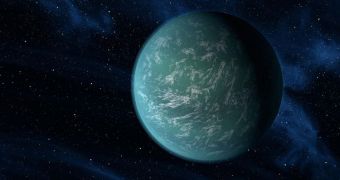A team of researchers has just completed a new investigation on how our planet would have looked like to a distant observer during the time of the dinosaurs. What this means is that the experts sought to figure out precisely how bright our world appeared to potential aliens on extrasolar planets.
Rather than use climate models to investigate this issue, the research team decided to correlate the layout of Earth's most important landmasses with the global cloud cover. This allowed them to determine the locations where clouds were most likely to form.
Large, cloud-covered areas are known for reflecting more sunlight back into space, therefore making our planet more visible to any potential observers. Naturally, the same would hold true for other worlds featuring a water-cycle and a working atmosphere.
If our studies of exoplanets reveal an object that is very bright, we may rightfully assume that the world is surrounded by an atmosphere that is able to form water clouds. The Saturnine moon Titan, for instance, is entirely obscured by clouds, but they are driven by liquid hydrocarbons, not water.
“When you look at the planet...it has a given distribution of continents and clouds. But it has not always been the same,” Astrophysical Institute of the Canary Islands (IAC) investigator and study team member Enric Palle says, as quoted by Space.
The team analyzed continental shifts that occurred 90, 230, 340, and 500 million years ago, and then correlated their positions with the state of the atmosphere, to determine cloud cover extent. The ultimate goal was to figure out how cloud disposition changed the planetary albedo.
For the most part, our planet's cloud cover has been roughly the same over the past half-billion years. However, more than 500 million years ago, wild variations probably existed in Earth's brightness as seen from afar. This was most likely due to the fact that continents were extremely close together.
This left huge expanses of ocean open, and clouds tend to form differently under such circumstances, the group explains. “Five hundred million years ago is the time in which life evolved from oceans to land,” Palle explains.
What the new study suggests is that exoplanets with broken cloud covers may be the easiest to detect overall. The technology required to conduct such observations is already available, or will become available within the next few years.

 14 DAY TRIAL //
14 DAY TRIAL //